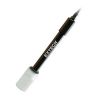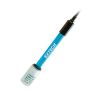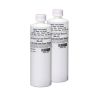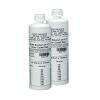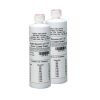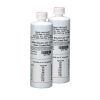Extech Waterproof pH/Conductivity Meter Kit
The Extech Waterproof Conductivity Meter Kit measures conductivity, TDS, salinity, resistivity, pH , mV, and temperature.
Features
- Automatic one button pH calibration (4, 7, and 10 pH)
- Choice of 3 point pH calibration for better accuracy
- One point conductivity calibration
- Free ground shipping
- Expedited repair and warranty service
- Lifetime technical support
- More
Overview
The Extech Waterproof Conductivity Meter Kit is a 7-in-1 instrument with lab-quality performance that measures conductivity, TDS, salinity, resistivity, pH, mV, and temperature. The automatic one-button pH calibration for pH 4, 7, and 10 gives users the choice of a 3-point calibration for better accuracy. The one-point conductivity calibration automatically recognizes 8 calibration solutions.
Benefits
The meter also includes automatic temperature compensation. The memory stores up to 300 readings with series number, measured value, and temperature.
- pH range: 2.00 to 19.99pH
- mV range: -1999 to + 1999mV
- Conductivity range: 0.00 to 199.9mS
- TDS range: 0 to 100g/L
- Salinity range: 0 to 100ppt
- Resistivity range: 0 to 100MΩ ⋅ cm
- Temperature range: 32 to 212°F (0 to 100°C), pH and mV, 32 to 122°F (0 to 50°C), all other ranges
- Resolution: 0.01pH, 1mV, 0.01μS, 0.01mg/L, 0.01ppt, 0.1Ω, 0.1°
- Accuracy: ±0.02pH; ±0.15mV; ±1.5%FS; ±1°F/±0.5°C
- Power: two AA batteries
- Dimensions: meter: 4.7 x 2.6 x 1.2" (120 x 65 x 31mm), kit: 14 x 10.75 x 3” (355.6 x 273 x 76.2mm)
- Weight: meter: 6.3oz (180g), kit: 3.5lbs (1.6kg)
- (1) Meter
- (1) Polymer conductivity cell
- (1) pH/mV/temperature electrode
- (1) 50mL bottle of 1413 uS/cm standard
- (1) 50mL bottle of pH 4 buffer
- (1) 50mL bottle of pH 7 buffer
- (1) 50mL bottle of pH 10 buffer
- (1) Screwdriver
- (2) AA batteries
- (1) Hard-sided carrying case
In The News
Spring 2025 Environmental Monitor Available Now
In the Spring 2025 edition of the Environmental Monitor, we highlight partnerships across the world and the importance of collaboration between government agencies, universities, environmental groups, local communities, and other stakeholders. From great white shark research in Cape Cod to monitoring fisheries in Lake Erie, this latest edition underscores partnerships that connect stakeholders in a watershed through environmental data. With an emphasis on data sharing, a combination of real-time and discrete sampling keeps the public and partners informed of environmental conditions. Our writers also sought out science professionals dedicated to working with peers within and outside of the environmental sector.
Read MoreMonitoring Mariculture in the Gulf of Alaska
The mariculture industry in the Gulf of Alaska has been steadily growing in recent years, guided by ongoing research to help refine farm location and cultivation practices. A subset of aquaculture, mariculture focuses on rearing organisms in the open ocean. In Alaska, finfish farming is illegal, so most farms cultivate kelp, oysters, or a combination of the two. These small, locally operated farms started popping up in the Gulf of Alaska in the early 1990s, when shellfish farming first became legal. Kelp farming did not begin to catch on in the state until 2016. Many of the coastal areas that have grown interested in mariculture are historically commercial fishing communities.
Read MoreSupplying Seattle’s Drinking Water: Using Data Buoys to Monitor the Cedar River Municipal Watershed
Providing clean, safe, and reliable drinking water for the 1.6 million people in the greater Seattle area is a top priority for Seattle Public Utilities (SPU). With limited water supplies, SPU dedicates considerable resources to maintain its watersheds and mountain reservoirs. About 70 percent of Seattle Water comes from the Cedar River Municipal Watershed , and the other 30 percent comes from the South Fork Tolt River Watershed . [caption id="attachment_39574" align="alignnone" width="940"] Data buoy in Chester Morse Lake . (Credit: Kevin Johnson / Seattle Public Utilities) [/caption] Jamie Thompson, a fisheries biologist at SPU, monitors aquatic ecosystems centered on fish listed under the U.S. Endangered Species Act (ESA).
Read More









